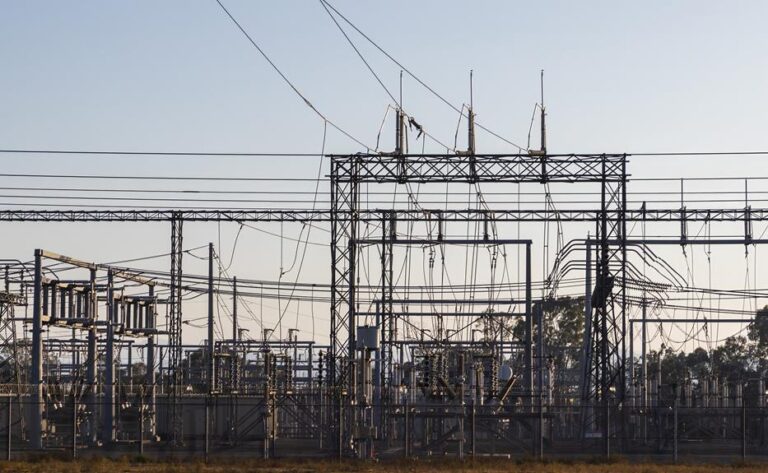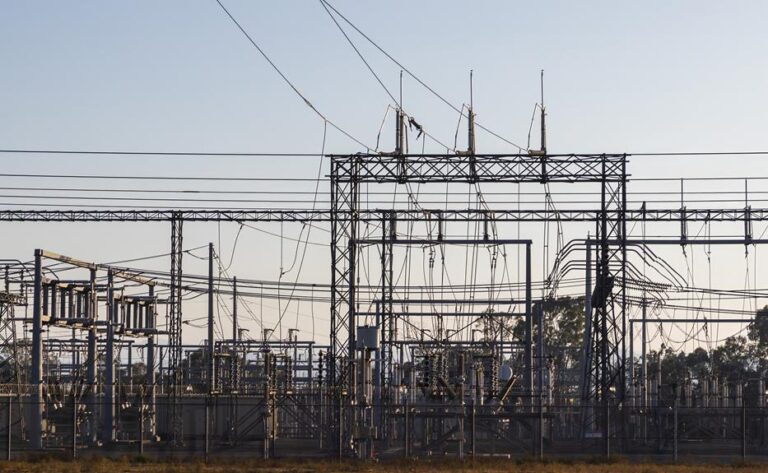Unlock Torque: Performance Camshaft Profiles Demystified
Just as a conductor directs an orchestra's harmony, a camshaft governs an engine's performance. This article unravels the intricate relationship between camshaft profiles and torque, providing a deep dive into the science behind performance camshaft design. It serves as a comprehensive guide for those seeking to liberate their engine's potential, offering insights into modification techniques, selection tips, and troubleshooting, ultimately demystifying the art of unlocking torque.
Key Takeaways
- Performance camshaft profiles play a crucial role in optimizing valve timing for enhanced airflow and combustion efficiency, ultimately impacting engine output power.
- The choice of camshaft profile, such as flat-tappet, roller, or overhead cam, depends on specific engine requirements and constraints, with each profile offering unique advantages and trade-offs.
- Camshaft profiles influence engine power and torque by factors such as lift, duration, lobe separation angle, and timing, affecting the quantity and quality of the air-fuel mixture and the synchronization between piston and valve motion.
- Proper selection, installation, and maintenance of a performance camshaft are essential for achieving the desired balance between performance and efficiency, as well as ensuring optimal lifter and camshaft condition through regular inspection and lubrication.
Understanding the Role of Camshafts in Engine Performance
How exactly do camshafts contribute to engine performance, and why are they considered a crucial component in the quest for increased torque and horsepower? The answer lies in understanding the role of camshafts in engine performance. Camshafts serve as the heart of the engine, controlling the vital intake and exhaust valves, which directly affect the engine's output power.
Performance camshaft profiles are designed to optimize valve timing, enhancing airflow into and out of the engine cylinders. This optimized airflow, in turn, boosts combustion efficiency, thereby improving torque, horsepower, and overall engine performance. The specific design of the camshaft profile – its lift, duration, and lobe separation angle – are key factors that determine the engine's power band and peak power output.
Engine tuning, in essence, is the process of adjusting the camshaft and other engine components to achieve the desired balance between performance and efficiency. A well-tuned engine with an optimized camshaft profile will deliver superior torque and horsepower, making every drive more liberating and exhilarating. Thus, the camshaft undeniably holds a pivotal role in the quest for optimal engine performance.
The Basics of Camshaft Profiles and Their Impact on Torque
A substantial portion of an engine's torque output is directly influenced by the intricate dynamics of camshaft profiles and their corresponding valve events. The profile of a camshaft, defined by its lift, duration, and timing, becomes a critical factor determining the efficiency of the air-fuel mixture process and the subsequent mechanical power generated by the engine.
A camshaft upgrade often aims to optimize these parameters, thus providing a noticeable horsepower boost. The lift and duration of the camshaft influence the quantity and quality of air-fuel mixture inducted into the cylinders, which directly affects the torque and power outputs. The timing of the camshaft, on the other hand, affects the synchronization between the piston and the valve motion, which can either enhance or undermine the engine's performance.
Moreover, a camshaft profile also significantly influences the tuned exhaust note of a vehicle. An aggressive camshaft profile with a high lift and long duration can result in a distinct, throaty exhaust note that many performance enthusiasts crave. Therefore, understanding the basics of camshaft profiles and their impact on torque is essential for those seeking liberation through engine performance optimization.
Decoding the Science Behind Performance Camshaft Design
Delving into the science behind performance camshaft design, it's crucial to understand that this complex process involves a delicate balance between various factors and is essentially the art of manipulating valve events for optimal engine performance. This precision-based manipulation is rooted in the intricate relationship between camshaft design and the engine's mechanical dynamics.
The camshaft, a vital component within the internal-combustion engine, plays an instrumental role in determining an engine's behavior. Its design dictates the timing, duration, and lift of the valves, which directly influence the engine's torque and horsepower. The science behind the camshaft's design is primarily focused on optimizing these valve events, aimed at augmenting the engine's performance.
The profile of a camshaft, defined by its lobe separation, lift, duration, and timing, must be meticulously crafted to match the engine's intended usage. Each minute alteration in the camshaft profile can significantly modify the engine's performance characteristics, creating a delicate interplay between power, efficiency, and reliability.
Understanding the scientific intricacies behind camshaft design paves the way to decipher the impact of different profiles on engine performance, which will be explored in the subsequent section: 'different types of camshaft profiles: a comparative study'.
Different Types of Camshaft Profiles: A Comparative Study
To enhance our understanding of performance camshaft profiles, we will now undertake a comparative study of different types of camshaft profile designs. This analysis will focus on the impact these varying designs have on engine performance, providing a technical and detailed examination of their respective attributes. This will further assist in determining the ideal camshaft selection for optimal torque unlocking.
Comparing Camshaft Profile Designs
Three primary types of camshaft profiles – flat-tappet, roller, and overhead cam – will be compared in this section to provide a comprehensive understanding of their unique design features and performance implications. Flat-tappet cams, characterized by their direct contact with the valve train, are generally more affordable but susceptible to wear due to friction. Roller cams, exhibiting a rolling contact, incur less friction and wear, boosting longevity. However, they necessitate stronger valve springs, which may increase engine load. Overhead cams, situated in the cylinder head, promote efficient valve operation. While they offer superior performance, their complex design and installation may deter some users. Each profile carries unique advantages and trade-offs, and the choice hinges on specific engine requirements and constraints.
Performance Impact Analysis
In this section, we will conduct a comparative study on the performance impacts of different types of camshaft profiles, namely flat-tappet, roller, and overhead cam, and how they contribute towards engine power and efficiency. We can compare these camshaft profiles in terms of their torque output, horsepower generation, and fuel efficiency.
| Camshaft Profile | Torque Output | Horsepower Generation | Fuel Efficiency |
|---|---|---|---|
| Flat-Tappet | High at low RPM | Moderate | Less efficient |
| Roller | Steady across RPM range | High | More efficient |
| Overhead Cam | Low at low RPM, high at high RPM | High | Most efficient |
Each type of camshaft profile has its own unique advantages and disadvantages. The choice of camshaft should therefore align with the specific performance and efficiency objectives of the engine in question.
Ideal Camshaft Selection
As we delve deeper into our discussion, it is crucial to understand that the ideal camshaft selection is largely contingent upon the specific performance needs of your engine, and this choice becomes clearer when we compare different types of camshaft profiles.
The selection process involves a comparative study of various camshaft profiles such as:
- Flat Tappet Camshafts: These are affordable, ideal for street performance but have limitations in terms of RPM range.
- Roller Camshafts: These offer higher RPM potential and improved efficiency but are more expensive.
- Hydraulic Camshafts: Known for their quiet operation and minimal maintenance requirements.
- Solid Camshafts: These provide maximum performance but need regular adjustments.
- Variable Valve Timing Camshafts: They optimize performance across a broad RPM range, enhancing both power and fuel efficiency.
Each profile has unique attributes, and your selection would depend on your specific engine performance objectives.
How Camshaft Profiles Affect Engine Power and Torque
The intricate relationship between camshaft profiles and engine power and torque is a key consideration when seeking to optimize engine performance. The precise configuration of the camshaft profile can dramatically alter an engine's power output, directly influencing the torque generated. Furthermore, the interplay between camshaft design and engine efficiency is critical, underscoring the importance of careful camshaft selection and setup.
Camshaft Profiles: Power Impact
Understanding the intricate relationship between camshaft profiles and engine power can greatly enhance your comprehension of how torque is generated and manipulated in performance vehicles. The camshaft profile impacts engine power in several key ways:
- The lift: A higher lift allows more air-fuel mixture into the combustion chamber, increasing power output.
- The duration: A longer duration keeps the valve open longer, permitting more air-fuel mixture to enter and increasing power.
- The lobe separation angle: A wider angle reduces valve overlap, improving engine efficiency and power.
- The ramp speed: A faster ramp speed opens and closes the valves more quickly, optimizing power output.
- The lobe centerline: Adjusting this can balance power output across the rpm range, maximizing power at different engine speeds.
Torque Changes With Profiles
While camshaft profiles significantly influence the power output of an engine, they also play a crucial role in determining the amount and characteristics of torque produced. Different camshaft profiles can either increase or decrease torque, influencing an engine's overall performance.
The table below provides an analysis of how varying camshaft profiles affect engine torque:
| Camshaft Profile | Torque Impact | Description |
|---|---|---|
| Aggressive | High | An aggressive camshaft profile typically results in higher torque production, especially at higher RPMs. |
| Moderate | Medium | A moderate profile can balance torque production across a wider RPM range, offering a more versatile performance. |
| Mild | Low | A mild camshaft profile is often designed for lower torque production, favoring fuel efficiency and smooth operation. |
Understanding these relationships can help in customizing engine performance to meet specific driving demands.
Engine Efficiency and Camshafts
Engine power and torque, both critical aspects of vehicle performance, are significantly influenced by the configuration and profile of the camshaft. The camshaft, the spine of the engine, orchestrates the opening and closing of valves, which directly impacts the engine's overall power output and efficiency.
- Different camshaft profiles result in variations in power and torque outputs.
- The duration of valve lift can drastically affect engine efficiency.
- A high-lift, long-duration camshaft profile generally yields higher power at the cost of low-speed torque.
- Conversely, a low-lift, short-duration profile might enhance low-speed torque while compromising high-speed power.
- The overlap period, when both intake and exhaust valves are open, also plays a pivotal role in shaping the engine's power band.
With this understanding, we transition to the next section: 'modifying camshaft profiles: the key to unlocking torque'.
Modifying Camshaft Profiles: The Key to Unlocking Torque
Although modifications to the camshaft profile might seem complex, they are a crucial factor in unlocking additional torque. The camshaft, often referred to as the "brain" of the engine, controls the opening and closing of the valves. By altering the timings and duration of these processes, we can significantly influence an engine's performance characteristics.
A camshaft profile modification typically involves adjusting the lift, duration or timing of the valves. This allows for more air and fuel to enter the combustion chamber, thus increasing the torque and power output. However, it is not a straightforward task. Each modification can have different effects on the engine's performance, depending on the specific engine design and the intended application.
For instance, increasing the lift and duration can improve high-speed power but may reduce low-end torque and fuel efficiency. Conversely, advancing cam timing can increase low RPM torque but diminish high-speed power. Therefore, achieving the optimal balance requires precise calculations and a comprehensive understanding of engine dynamics.
Essential Tips for Choosing the Right Performance Camshaft
Selecting the right performance camshaft is a crucial task, and understanding the key parameters can significantly streamline this process. The ideal camshaft must harmonize with the entire engine system to optimize output.
Here are the essential tips to consider:
- Application: Determine the primary use of your vehicle. Street driving, racing, or towing have distinct camshaft requirements.
- Engine Specifications: Analyze engine size, compression ratio, and fuel delivery system. These dictate camshaft profile suitability.
- Vehicle Specifications: Evaluate the weight, transmission type, and rear-end gears. These impact camshaft selection.
- Complementary Modifications: Consider planned modifications, like headers or high-flow cylinder heads. They influence the camshaft's efficiency.
- Manufacturer's Recommendations: Trust the experts. They provide valuable insights into the best camshafts for specific engine configurations.
The Effect of Camshaft Timing on Torque and Performance
The role of camshaft timing in engine performance is both significant and complex, affecting the production of torque, fuel efficiency, and overall power output. It's all about the synchronization between the camshaft and the crankshaft, the so-called "valve timing," which determines when the intake and exhaust valves open and close in relation to piston movement.
Advanced camshaft timing, where the valves open and close earlier in the cycle, can boost low-end torque and fuel efficiency but may limit high-speed power, due to reduced cylinder filling at high RPM. Conversely, retarded timing, where the valves open and close later, can enhance high RPM power at the expense of low-speed torque and fuel efficiency.
Moreover, variable valve timing technology allows modern engines to dynamically adjust camshaft timing based on operating conditions, providing the best of both worlds. However, it adds complexity and potential failure points to the system.
Understanding the intricate relationship between camshaft timing and engine performance is crucial for any gearhead seeking to unlock the full potential of their engine. As we transition to troubleshooting common issues with performance camshaft profiles, this knowledge will prove invaluable.
Troubleshooting Common Issues With Performance Camshaft Profiles
Inaccurate valve timing and improper camshaft installation often lead to performance issues, but understanding how to correctly troubleshoot these common problems can greatly improve your engine's torque and overall output. A detailed diagnosis can reveal the root causes of these issues, enabling effective corrective measures.
- Valve Timing: Incorrect valve timing can cause a loss of torque, power, and fuel efficiency. It's crucial to ensure your timing marks align correctly during installation and adjustment.
- Camshaft Position: An improperly positioned camshaft can lead to serious engine damage. Always verify correct positioning using a degree wheel or similar tool.
- Lifter Problems: Worn or damaged lifters can hinder valve operation and impact performance. Regular inspection and maintenance are key to ensuring optimal lifter condition.
- Camshaft Wear: Over time, camshaft lobes can wear down, compromising their ability to open and close valves effectively. Regular inspections and timely replacements can mitigate this issue.
- Inadequate Lubrication: Lack of proper lubrication can lead to premature wear and tear. Always ensure adequate oil flow to all camshaft components.
Through a diligent, analytical approach to troubleshooting, one can effectively address common camshaft performance issues, thus unlocking potential power and torque, granting your engine the liberation it deserves.
Frequently Asked Questions
What Are the Safety Precautions to Be Taken While Installing a Performance Camshaft?
While installing a performance camshaft, safety precautions include using appropriate protective gear, ensuring the engine is cool, disconnecting the battery, and following manufacturer's instructions to prevent mechanical damage or personal injury.
How Often Should the Performance Camshaft Be Checked or Replaced for Optimal Torque?
To ensure optimal torque, a performance camshaft should be inspected regularly, ideally every 20,000 to 40,000 miles. Replacement is typically necessary if wear or damage is found, or every 60,000 to 100,000 miles.
Is It Possible to Install a Performance Camshaft on Any Type of Engine?
Yes, installation of performance camshafts is plausible across various engine types. However, the compatibility and potential gains depend on the engine's specifications, requiring thorough analysis for optimal torque and overall performance enhancement.
How Does the Weather or Climate Affect the Performance of the Camshaft and Torque?
Weather conditions impact camshaft performance and torque. Cold temperatures can thicken engine oil, affecting lubrication. Humidity can affect air density, altering combustion efficiency. Thus, climate plays a significant role in engine and camshaft performance.
Are There Specific Brands of Performance Camshafts That Are Recommended for Certain Types of Vehicles or Engines?
Yes, specific brands are recommended for certain vehicle types or engines. For example, Comp Cams is suitable for American muscle cars, while Tomei is preferred for Japanese performance vehicles due to their camshaft profiles.
Conclusion
In summary, understanding the intricacies of camshaft profiles holds the key to unlocking engine torque and enhancing performance. The right selection, modification, and timing of a performance camshaft can significantly boost power and torque. However, troubleshooting issues that arise is equally paramount. Thus, the mysterious world of camshaft profiles, once demystified, offers a treasure trove of opportunities for performance optimization in automotive engineering.







